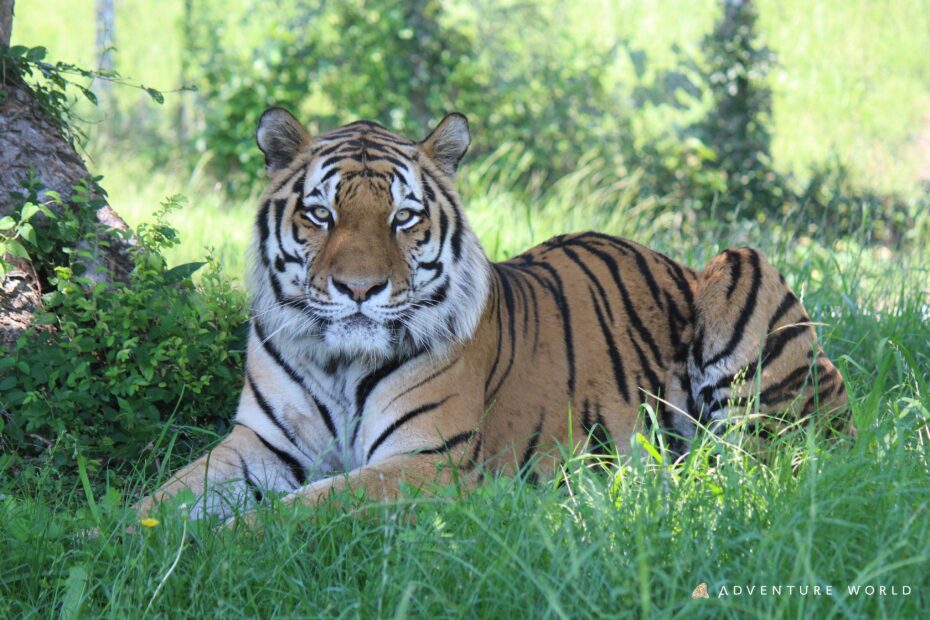【Adventure World】 A male Amur tiger will be transported to Kobe Oji Zoo for future breeding. Image
URL: Adventure World Press release: July 5, 2025 Preserving the lives of animals for the future A male Amur tiger will be transported to Kobe Oji Zoo with the aim of future breeding
https://prcdn.freetls.fastly.net/release_image/40302/993/40302-993-e4b7a37ada60c5e301b78b659895c944-3900×2600.jpg This male Amur tiger will be taken out for the purpose of future breeding. A male Siberian tiger living at Adventure World
(Shirahama-cho, Wakayama Prefecture) will be transported to Kobe Oji Zoo (Kobe City, Hyogo Prefecture) for the purpose of future breeding. This transport is being carried out as an effort to maintain the genetic diversity of the rare Siberian tiger species, and in the future, we plan to work on breeding with a female kept at Kobe Oji Zoo. We hope that in his new home, he will become a beloved presence in the local community and that a new life will be born. [Amur tiger to be transported] ・Birth date June 15, 2017 (age 8) Born at Hagenbeck Zoo, Germany ・Nickname Mishka ・Gender Male ・Scheduled delivery date Wednesday, July 9, 2025 ・Breeding record He is the father of twins born in May 2024 at Adventure World. Currently, the same pair has been confirmed to be pregnant, and a new life is expected to be born in mid-July this year. *For the safety of the animals, we cannot accept interviews during the removal work. 【Adventure World Amur Tiger Breeding】 – Number of tigers: 5 (2 males, 3 females) *Including the tigers being removed this time – Breeding numbers: 8 births, 18 babies born, 6 raised 【Working with the world to breed Amur tigers】 The Amur tiger is a tiger that lives in northeastern China and Siberia. It is said that there are about 500 of them living in the wild. The World Association of Zoos and Aquariums (WAZA) selected the Amur tiger as a target species of the Global Species Management Plan (GSMP), and zoos around the world are working together to preserve the species. It is difficult to preserve the species while maintaining genetic diversity with only individuals kept in Japan, so based on the Global Species Management Plan, a male was accepted from Hagenbeck Zoo in Germany in 2019 and a female from Seoul Grand Park in Korea in 2022, and a baby was born in May 2024. We hope that the removal of the male will lead to the birth of a new life at Oji Zoo. 【About Amur Tigers】
■Classification: Carnivora: Felidae ■Scientific name: Panthera tigris altaica ■English name: Amur Tiger ■Habitat: Northeast China to Siberia ■Diet: At Adventure World, they are fed horse meat and beef. ■Reproduction: After a gestation period of about 100 days, they give birth to 1 to 6 calves at a time. Newborn tigers weigh around 1kg and are born in an immature state with their eyes still closed. The cubs’ eyes open around 10 days after birth, but they then undergo weaning and hunting training, and it can take up to two years for them to learn the skills they need to survive and become independent from their mothers. ■Lifespan: The lifespan in captivity is 20 to 25 years. ■Characteristics: The Amur tiger is the northernmost living tiger. They are solitary animals with vast territories of 60 to 100 square kilometers, traveling more than 10 km, sometimes even 40 km, in a night. They are nocturnal carnivores that hunt by roaming. Tiger fur and bones are used for ornaments and herbal medicines, and are traded at high prices, which has led to increased poaching and a decline in the Amur tiger population. The International Union for Conservation of Nature (IUCN) has listed the tiger as an endangered species. 【Adventure World “SDGs Declaration and Park Policy”】
https://www.aws-s.com/parktheme-sdgs/ Adventure World is a place where you can “look at life and continue to question it. A place where you can notice the beauty of life.” The park embodies the image of a rich future Earth where all life is filled with smiles (happiness). Through this “small earth” that is the park, we will continue to create the future of Smile so that the lives of everyone involved are enriched, so that the lives of animals are connected forever, and so that nature and resources are circulated and regenerated. About SDGs SDGs stands for “Sustainable Development Goals.” It consists of 17 goals and 169 targets to solve problems facing society and create a brighter future for the world by 2030. It is an international goal that was
unanimously adopted by 193 member states at the United Nations Headquarters in New York in September 2015.
https://prcdn.freetls.fastly.net/release_image/40302/993/40302-993-a07ea9a00ebde8e10cd84fca968dda21-790×388.jpg *This email has been sent automatically, so please do not reply.

This article was partly generated by AI. Some links may contain Ads. Press Release-Informed Article.